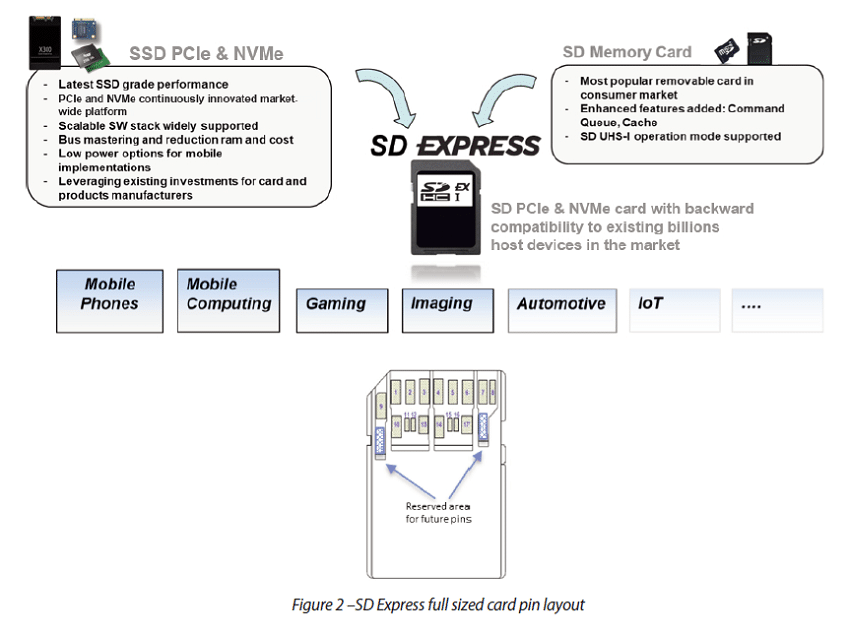 PCI-SIG and the SD Association have announced a partnership with the signing of a Memorandum of Understanding to advance the new SD Express memory card as a component in the PCIe ecosystem. SD Express technology is equipped with both an SD legacy protocol and a PCIe interface, claiming transfers rates of up to 985MB/s. It is also backward compatible with existing SD hosts in the market.
PCI-SIG and the SD Association have announced a partnership with the signing of a Memorandum of Understanding to advance the new SD Express memory card as a component in the PCIe ecosystem. SD Express technology is equipped with both an SD legacy protocol and a PCIe interface, claiming transfers rates of up to 985MB/s. It is also backward compatible with existing SD hosts in the market.
PCI-SIG and the SD Association have announced a partnership with the signing of a Memorandum of Understanding to advance the new SD Express memory card as a component in the PCIe ecosystem. SD Express technology is equipped with both an SD legacy protocol and a PCIe interface, claiming transfers rates of up to 985MB/s. It is also backward compatible with existing SD hosts in the market.

SD Express uses the PCIe 3.0 specification, allowing it to deliver the necessary performance levels required of use cases such as mobile and client computing, imaging, IoT and automotive applications. The SD Express interface and initialization process is also extremely flexible. Hosts that support an SD Express product will be able to initialize the card through either a legacy SD or PCIe interface.
Power-wise, the maximum consumption from a host using SD Express is quoted at 1.80 watts, which represents the accumulated wattage from the two power supplies.
PCI-SIG and the SD Association indication the following further details of SD Express:
- The full size SD Express card uses the same pins and connectors as defined for existing SD UHS-II.
- Features new PCIe and NVMe interfaces. The differential interface of single lane PCIe Generation 3 is using the same pads as of the SD UHS-II differential interface pads found in the second row of pins. Next, PCIe REFCLK along with the side band signals CLKREQ# and PERRST# are shared with the existing SD UHS-I, leverage the first row of pins.
- The first row is also the SD UHS-I interface, delivering full backward compatibility and interoperability with billions of existing SD host devices.
- SD Express will not support UHS-II interface.
- SD7.0 specification defines a full size form factor using two power supplies, a traditional 3.3 volt and 1.8 volt. SD7.0 also allows an optional 1.2v supply, for future form factors that requires additional pin #18. The future optional 1.2 volt will allow additional power/performance optimization.
As for the details of the partnership, the Memorandum of Understanding indicates that PCI-SIG and the SD Association will collaborate on a technical interchange related to SD Express and SD Express Test Guidelines and also information related to PCIe electrical certification of SD Express products. They will also form the PCI-SDA Advisory Team and the SD-PCIe Technical Group, which consist of members from both SDA and PCI-SIG.
Sign up for the StorageReview newsletter
